Here’s how curators function as UX designers
Hezha Amin
March ٧, ٢٠٢٤
٤ خولەک خوێندنەوە

People’s perceptions of works of art may be extremely subjective, and they each have unique opinions of them. Since ancient times, artworks have appeared in a variety of forms. Through various mediums, people from all around the world have contributed to the creation of art.
Throughout the many years that have gone by, works of art have been “spread” and shown. This has led to the assets being scattered all over the world, so if one is looking for “fine” works of art, they must be very careful about where they search.
A curator of art can help with this. The majority of a curator’s time is spent searching for artistic creations that speak to issues that are important to them, and then they begin their study of those pieces. To convey a message that the general public can understand, they interpret the meanings of words and arrange them in a particular way.
UX designers examine how a process or program operates before experimenting with various information layouts to make it simpler for consumers to grasp the message and functionality. Similar to designers, curators arrange art in galleries and showrooms in a way that is accessible to guests.
I met a man by the name of Dara Rasul [Daro] when I visited Esta Gallery, which is located in the former tobacco factory in Sulaymaniyah. He started out by describing how he and other people co-founded the gallery. His role in setting up the gallery was to create a space where works of art and beauty could be displayed, but that wasn’t the only aspect of his job.
Daro addressed his occupation as an art curator. It would seem that a curator’s responsibility is to preserve the quality and condition of a collection of works. However, not all curators follow this rule. Instead, they collaborate with other creatives and artists to arrange exhibits of the work they produce. Curators are those who cater to the curiosity of the ambitious. This is remarkably similar to the case of UX designers, who frequently pique the interest of their client’s end-users. To help people understand the work being done, they collaborate with programmers and other technical specialists.
You are initially shown black-and-white pictures at Esta Gallery with obvious messages and callouts for attention. The themes seen throughout the show are introduced in the first hall. Examples of the subjects are violence, pollution, feminism, death, and culture. A sense of simplicity and minimalism is demonstrated in these pieces.
As soon as you get inside the second hallway, colors and uncertainty begin to emerge. It takes you a little longer to understand the material that is before you because you start to doubt what you are seeing. This was meticulously planned since the human brain functions very similarly to how our stomachs do during a meal. The main meal is served once you are ready for it after we first eat a basic soup to get us ready for what is to come.
In order to create their shows, curators make an effort to imagine themselves as those who are unfamiliar with the art. They consider where to begin and how to make the visitors’ experience of answering the questions on their minds delightful. They do this to satisfy the aforementioned guests’ interest.
You reach the last half of the show, which is packed with bright hues, movies, and items that are left up for critical interpretation. This is where everything comes together, with several movies streaming on the walls and speeches and music playing nonstop. You are left to observe and savor the immersive experience of the show’s conclusion while being presented with odd artifacts.
See the beauty before you, feel the ground beneath your feet, and hear the music. The gallery is purposefully made to carry you and cause you to lose track of where you are. In order to really appreciate the works of art, you must immerse yourself in them and imagine yourself in the positions of the numerous people who contributed much to their creation.
After all, this is the true purpose of user experience design. Leading your users and customers to tinier locations where they would not normally find them. People need to be led in the right direction and introduced to the works and elements that can be of interest to them. It is the responsibility of both curators and designers to extend their hands and take the people.
We designers are storytellers in our own right, much like curators. We use no colors at all to begin our expositions. When the public is ready for it, we start revealing the components of the tale we have prepared. What should be exhibited and how it should be viewed are decisions we make. We pique the interest of our end users and visitors and leave them wanting more. We also give them the impression that they understand what they are viewing and feel at ease enjoying the experience.
